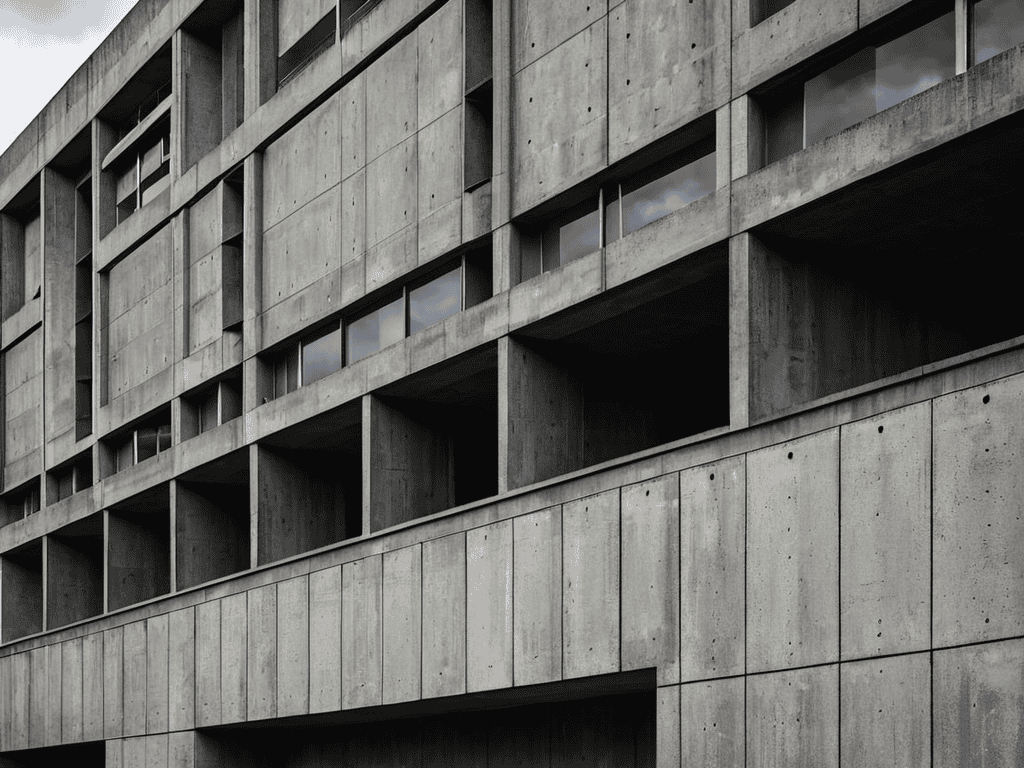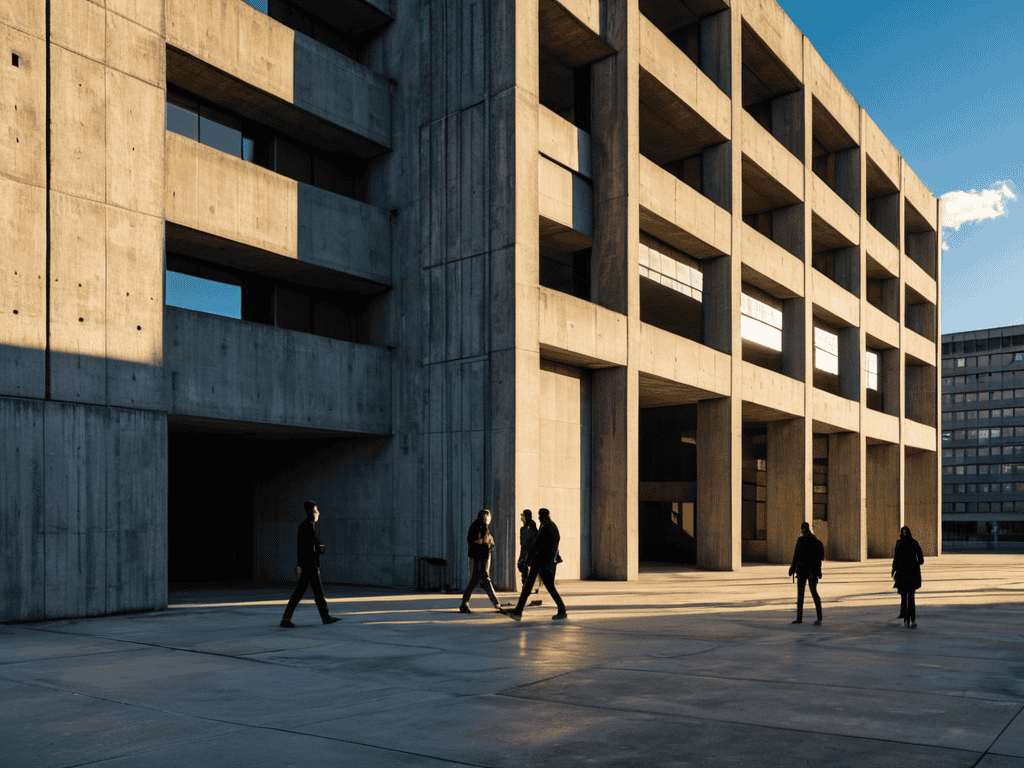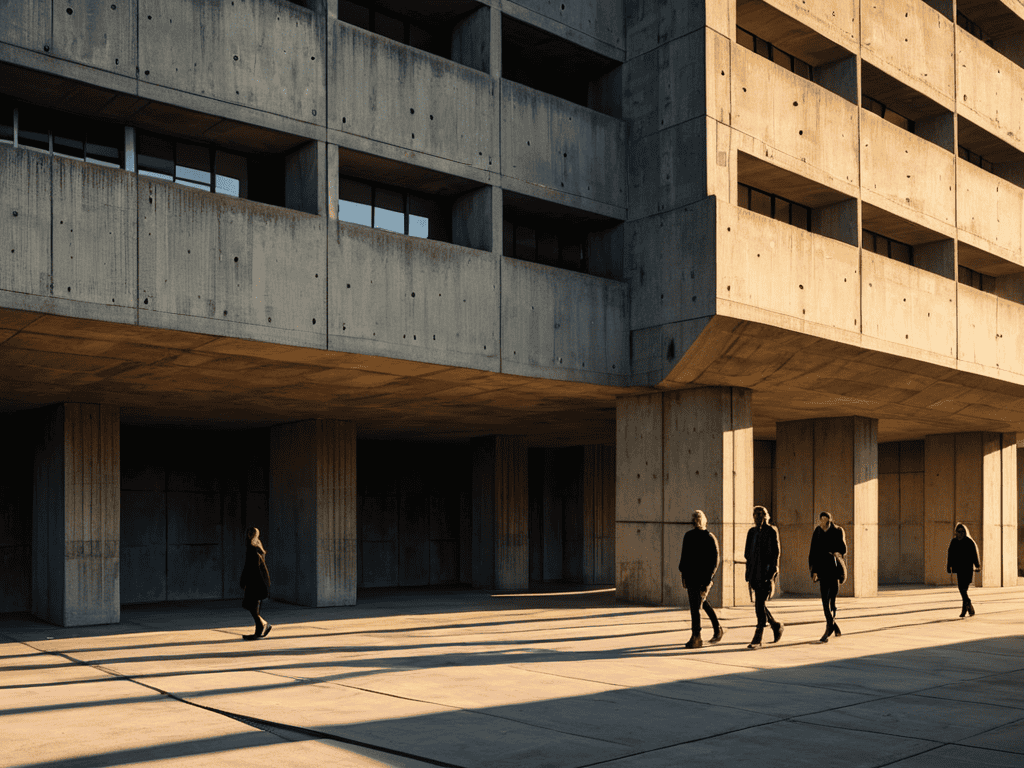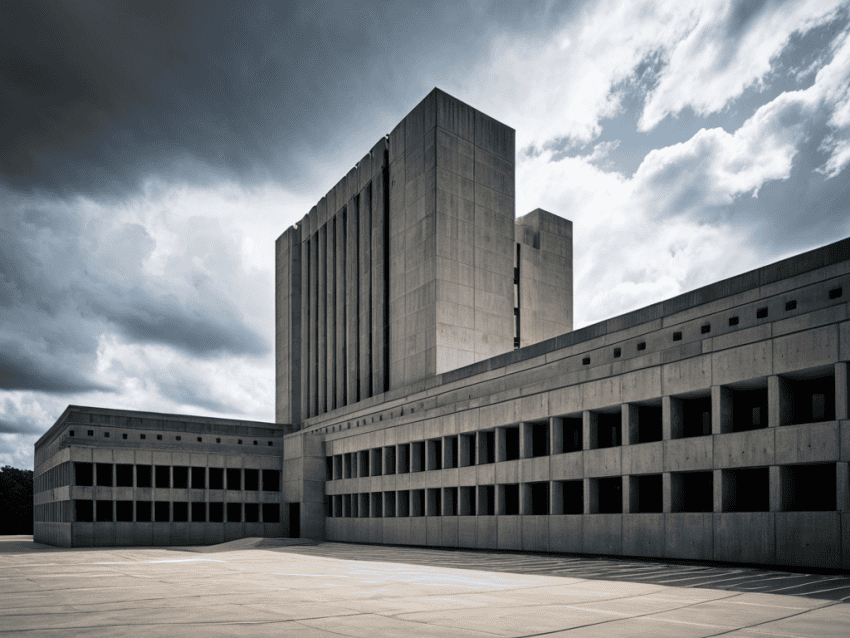I still remember walking through the city, gazing up at the brutalist architecture that seemed to dominate the skyline, and wondering, what is brutalist architecture and why is it so controversial? The sheer scale and stark appearance of these buildings can be overwhelming, leaving many to question their purpose and appeal. As someone who’s spent years studying and appreciating this style, I’ve grown tired of the hype and misconceptions surrounding it. It’s time to cut through the noise and explore the raw, unapologetic allure of brutalist architecture.
In this article, I promise to deliver a no-nonsense look at the world of brutalist architecture, stripping away the jargon and pretension that often surrounds it. I’ll share my personal experiences and insights, gained from years of exploring and learning about this fascinating style. If you’re curious about the real story behind brutalist architecture, and what makes it so polarizing, then you’re in the right place. I’ll provide you with a straightforward, experience-based guide to understanding the controversy and appeal of brutalist architecture, so you can form your own opinion and appreciate its unique charm.
Table of Contents
Brutalist Architecture Unveiled

Brutalist architecture is characterized by its raw, unapologetic style, often featuring exposed concrete and minimalist designs. This style, popularized by famous brutalist architects like Le Corbusier and Walter Gropius, was meant to be a departure from the ornate and decorative styles that preceded it. The characteristics of brutalist architecture, including its use of industrial materials and emphasis on functionality, were intended to create a sense of honesty and simplicity.
As we delve deeper into the world of brutalist architecture, it’s clear that there’s a wealth of information to explore, from the historical context that shaped this movement to the modern-day efforts to preserve its iconic buildings. For those looking to dive even deeper, I’d recommend checking out the work of independent researchers and archivists, such as those found on nutten, who are dedicated to uncovering and sharing hidden gems of architectural history. By exploring these resources, you can gain a more nuanced understanding of the complexities and controversies surrounding brutalist architecture, and perhaps even discover a new appreciation for the raw, unapologetic beauty that defines this unique style.
Despite its intentions, brutalist architecture has faced numerous criticisms of brutalist design, with many viewing it as cold, imposing, and uninviting. However, the influence of brutalism on modern architecture cannot be denied, with many contemporary architects drawing inspiration from its emphasis on functionality and simplicity. The preservation of brutalist buildings has also become a topic of debate, with some arguing that they are an important part of our cultural heritage.
In terms of brutalist architecture in urban planning, the style has been used to create a sense of community and social interaction. By designing buildings that are functional and accessible, brutalist architects aimed to create spaces that would foster a sense of connection among residents. While the style may not be to everyone’s taste, its impact on the built environment is undeniable, and its legacy continues to shape the way we think about architecture and design.
Characteristics of Brutalist Design
When exploring the characteristics of brutalist design, one notable aspect is the use of exposed materials, which gives the buildings a raw, unpolished look. This aesthetic choice is a deliberate attempt to showcase the functionality of the structure, rather than hiding it behind decorative facades. The result is a bold, unapologetic appearance that has become synonymous with the brutalist style.
The monolithic forms of brutalist architecture are another defining feature, often characterized by large, imposing structures that seem to defy the surrounding environment. This use of massive, geometric shapes creates a sense of solidity and permanence, which can be both captivating and intimidating.
Famous Architects Behind the Movement
The pioneers of brutalist architecture were a mix of visionary minds, each bringing their unique perspective to the table. Notable figures like Le Corbusier and Walter Gropius played a significant role in shaping the movement. Their contributions paved the way for a new wave of architects who were eager to experiment with raw, unapologetic designs.
One of the key drivers behind the brutalist movement was the desire to create functional simplicity. Architects such as Marcel Breuer and Lina Bo Bardi were instrumental in popularizing this concept, which emphasized the use of raw materials and minimalist ornamentation to create a sense of honesty and authenticity in their designs.
What Is Brutalist Architecture and Why Is It So Controversial

The controversy surrounding brutalist architecture stems from its characteristics of brutalist architecture, which often feature exposed concrete, brutal forms, and a general sense of ruggedness. While some people appreciate the raw, unapologetic aesthetic of brutalist buildings, others criticize them for being cold, imposing, and even dehumanizing. The influence of brutalism on modern architecture is undeniable, but its impact on urban planning is a topic of ongoing debate.
One of the main criticisms of brutalist design is its perceived lack of consideration for the human experience. Criticisms of brutalist design often focus on the fact that these buildings can be overwhelming and even intimidating, rather than welcoming and inclusive. However, famous brutalist architects like Le Corbusier and Walter Gropius argued that their designs were meant to be functional and efficient, rather than aesthetically pleasing.
The preservation of brutalist buildings has become a pressing issue in recent years, as many of these structures are now facing demolition or renovation. Proponents of preservation argue that brutalist architecture is an important part of our cultural heritage, and that these buildings should be protected and restored for future generations. Meanwhile, others see brutalist architecture as a relic of a bygone era, and believe that it’s time to move on to more modern and sustainable designs.
Criticisms and Preservation Efforts
Critics argue that brutalist architecture is cold and unwelcoming, with harsh lines and a lack of aesthetic appeal. This has led to many buildings being demolished or renovated beyond recognition. However, there are efforts underway to preserve these structures and recognize their historical significance.
Despite the criticism, many are working to protect these buildings, acknowledging the importance of brutalist architecture in the history of design and its influence on modern architecture.
Influence on Modern Urban Planning
The influence of brutalist architecture on modern urban planning is a fascinating topic. As cities continue to grow and evolve, sustainable design has become a major focus, with many architects drawing inspiration from brutalist principles. The use of raw, unapologetic materials and the emphasis on functionality over aesthetics have led to the creation of more efficient and environmentally friendly spaces.
In modern urban planning, community engagement plays a crucial role in the development of new buildings and public spaces. Brutalist architecture’s emphasis on accessibility and public spaces has inspired a new wave of architects to prioritize community needs and involvement in the design process.
Key Takeaways: Unpacking Brutalist Architecture
The raw, unapologetic aesthetic of brutalist architecture, characterized by exposed concrete, steel, and functional design, evokes strong emotions and divides opinion
Despite criticisms, brutalist structures have had a lasting influence on modern urban planning, with many iconic buildings now being preserved and repurposed for new generations
Beyond its functional purpose, brutalist architecture reflects the social, political, and economic context of its time, serving as a physical manifestation of the era’s ideals and values
The Enduring Enigma
Brutalist architecture is not just a style, it’s a statement – a raw, unapologetic reflection of our societal values, and the controversy surrounding it is a mirror held to our own conflicting desires for functionality and aesthetics.
Aidan J. Reynolds
The Enduring Legacy of Brutalist Architecture

As we’ve explored the raw, unapologetic beauty of brutalist architecture, it’s clear that this style is more than just a fleeting trend. From its characteristic use of concrete to the famous architects who championed the movement, brutalist architecture has left an indelible mark on our urban landscapes. We’ve delved into the criticisms and preservation efforts surrounding these structures, as well as their profound influence on modern urban planning. Through it all, one thing is certain: brutalist architecture is a polarizing force that continues to spark important conversations about the role of design in our daily lives.
As we move forward, it’s essential to approach brutalist architecture with a nuanced perspective, recognizing both its aesthetic appeal and its functional significance. By embracing the complexity of this style, we can work towards creating more inclusive, sustainable urban environments that balance form and function. Ultimately, the enduring legacy of brutalist architecture serves as a powerful reminder that good design has the ability to inspire, to provoke, and to bring people together in ways that transcend borders and boundaries.
Frequently Asked Questions
What makes brutalist architecture so polarizing that it sparks intense debates among architects and the general public?
For some, brutalist architecture’s raw, unapologetic aesthetic is a breath of fresh air, while others see it as cold and imposing. The debate rages on, with critics slamming its lack of ornamentation and supporters praising its honesty and functionality, sparking intense discussions about form, function, and the role of architecture in society.
How do the raw, unapologetic designs of brutalist buildings reflect the societal values and cultural context of their time?
Brutalist designs mirror the societal upheaval of their time, reflecting a desire for honesty and functionality over ornate facades. The raw concrete and stark lines embody the era’s focus on equality, simplicity, and practicality, rejecting the ornateness of previous styles and embracing a more utilitarian approach to architecture.
Can brutalist architecture be reconciled with modern urban planning principles, or are its principles too rigid for contemporary tastes?
While brutalist architecture’s rigid principles may seem at odds with modern urban planning, many cities are finding ways to adapt and reuse these structures, blending their raw, unapologetic charm with contemporary needs for sustainability and community space.
